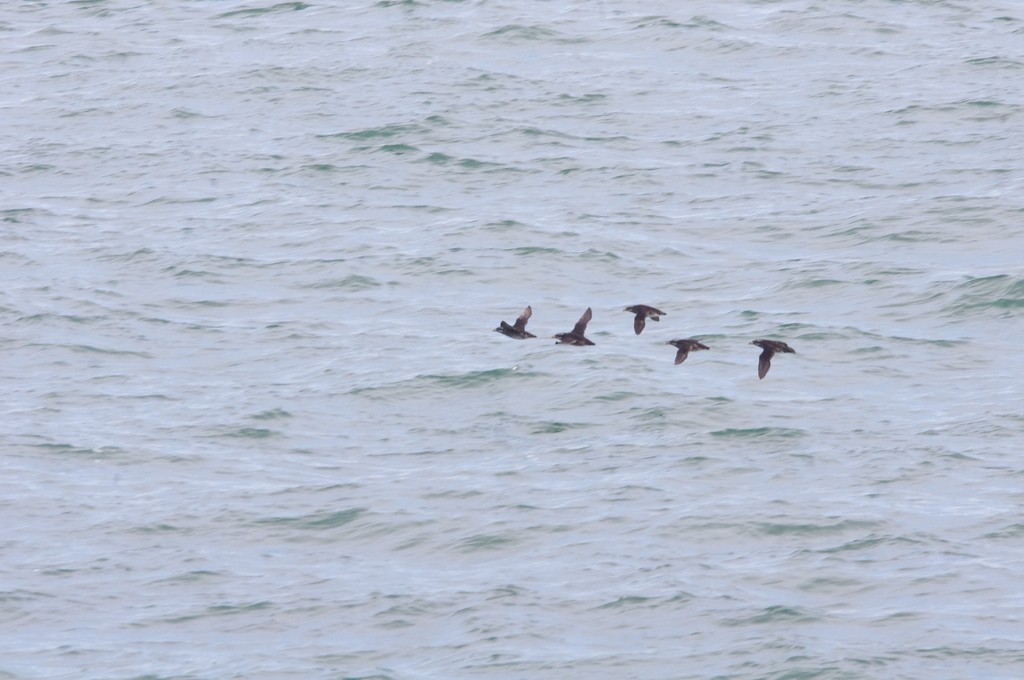Rhinoceros Auklet
A species of Rhinoceros Auklets, Also known as Rhinoceros Puffin Scientific name : Cerorhinca monocerata Genus : Rhinoceros Auklets
Rhinoceros Auklet, A species of Rhinoceros Auklets
Also known as:
Rhinoceros Puffin
Botanical name: Cerorhinca monocerata
Genus: Rhinoceros Auklets
Content
Description General Info
 Photo By Mike , used under CC-BY-NC-4.0 /Cropped and compressed from original
Photo By Mike , used under CC-BY-NC-4.0 /Cropped and compressed from original Description
The rhinoceros auklet (Cerorhinca monocerata) is a seabird and a close relative of the puffins. It is the only extant species of the genus Cerorhinca. Given its close relationship with the puffins, the common name rhinoceros puffin has been proposed for the species. It ranges widely across the North Pacific, feeding on small fish and nesting in colonies. Its name is derived from a horn-like extension of the beak (the anatomic term for this extension is the rhamphotheca). This horn is only present in breeding adults, and like the elaborate sheath on the bill of puffins is shed every year. This horn also processes fluorescent properties, which is likely involved in reproductive signalling. The rhinoceros auklet (also known as the rhino auklet, horn-billed puffin, or unicorn puffin), is a medium-sized auk with a large, strong, orange/brown bill (with the 'horn' protruding from it). The plumage is dark on top and paler below; breeding adults (both male and female) possess white plumes above the eyes and behind the bill. Males are slightly larger than females (about 10% in mass). 
Size
38 cm (15 in)
Life Expectancy
10-11 years
Nest Placement
Burrow
Feeding Habits
Rhinoceros Auklet's diet consists primarily of small, schooling fish or zooplankton. They dive up to 100 feet, using wings and feet for propulsion and steering, to hunt prey by forcing it upwards. They often forage cooperatively in large flocks, sometimes with other seabird species, and feed on various fish, squid, and crustaceans.
Habitat
The rhinoceros Auklet occupies marine habitats across the North Pacific, from coastal to open sea regions, and adeptly forages in areas with tidal rips. These birds utilize sea depths often beyond 50 feet. During breeding, they nest in island burrows in various terrains, requiring nearby nutrient-rich foraging grounds. Post-breeding, rhinoceros Auklet move to pelagic zones along continental shelves.
Nest Behavior
Both rhinoceros Auklet parents collaborate in burrow excavation. Nest building occurs above the high tide line, followed by egg-laying and biparental care throughout the incubation and chick-rearing stages.
Nest Characteristics
Rhinoceros Auklet nests on island edges, in grassy or forested areas, excavating burrows up to 20 feet long, ending in a chamber with a shallow depression lined with grass, leaves, and twigs.
Dite type
Piscivorous
General Info
Feeding Habits
Bird food type
Behavior
Rhinoceros Auklet exhibit nocturnal tendencies during breeding, with limited understanding of their mating antics. They engage in unique courtship displays that include marching, bowing, and billing, indicative of their social bond formation. Monogamous by nature, rhinoceros Auklet's often rekindle bonds with former mates annually. Dusk signals their offshore assembly to forage for offspring, cautiously timing their return post-sunset to minimize predation risks. Their entrance to nest burrows is characterized by a deliberate aerial dance over their colony, ensuring safe passage to their young.
Distribution Area
The rhinoceros auklet is a North Pacific auk that breeds from California (the Channel Islands) to the Aleutian Islands in Alaska in North America; and Hokkaidō and Honshū, Japan, as well as the Korean Peninsula and Sakhalin Island in Asia. It winters both in offshore and inshore waters, exhibiting some migration. Between October and April, migration of a large number occurs on pelagic California waters, most coming from breeding colonies north of California. Auks that reside off the California coast remain in their areas. 
Species Status
Not globally threatened.
Scientific Classification
Phylum
Chordates Class
Birds Order
Shorebirds Family
Alcidae Genus
Rhinoceros Auklets Species
Rhinoceros Auklet